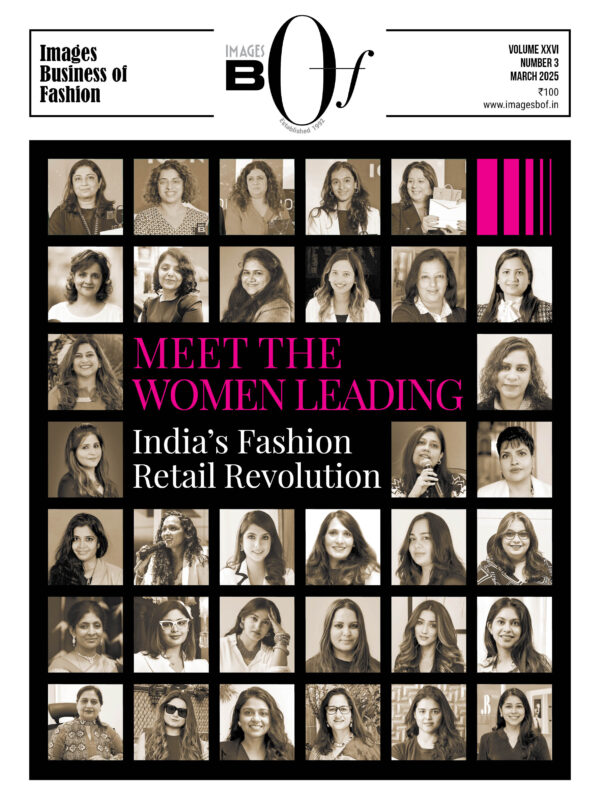In an era where sustainability is no longer a choice but a necessity, brands that prioritise ethical sourcing, fair wages, and environmentally responsible practices are leading the way toward a more conscious future.
Consumers today are increasingly seeking products that align with their values, making it essential for businesses to integrate sustainability into every aspect of their operations. From reducing environmental impact to empowering marginalised communities, the shift towards responsible consumption is shaping the way we shop and produce.
Founded by social entrepreneur and the Co-founder & Managing Trustee of Industree Foundation, Neelam Chhiber, Flourish stands at the forefront of this movement. The brand bridges the gap between artisans and conscious consumers, offering a curated range of apparel, home décor, jewellery, and more—each crafted with sustainability at its core.

In a freewheeling chat with IMAGES Business of Fashion’s Business Reporter, Kajal Ahuja, Pragati Tripathi, COO, Flourish, shares the Flourish story with us.
Excerpts from the chat…
How did the idea of Flourish come about? How has the brand evolved since its inception?
Flourish was founded with a simple yet profound purpose: to champion conscious consumption and make socially and environmentally sustainable products accessible to all.
At its core, Flourish is driven by the belief that every stakeholder in the supply chain—from creators to consumers—deserves recognition, transparency, and celebration. Since its inception in August 2021 with just 40 artisan groups, we have experienced significant growth. We now work with over 300 artisan groups and offer more than 10,000 unique, sustainably-made products.
Flourish also places a strong emphasis on empowering women producer groups, advocating for fair wages, safe working conditions, and recognition of their skills and dedication. By adopting a transparency-driven approach, Flourish helps consumers understand the real value of the products they purchase and the direct impact their choices have on makers and their communities.
Provide us with an overview of the brand’s mission & vision.
Flourish envisions a future where conscious consumption is a way of life for everyone. By democratising wealth creation and ensuring that creator and producer groups receive due recognition, Flourish bridges the gap between makers and consumers. Through transparency, ethical practices, and sustainable livelihoods, we strive to build a world where every purchase contributes to a more equitable and environmentally responsible global economy.
What are your core offerings, and what are your highest-selling products?
We offer a diverse range of unique, artisanal, eco-friendly, and ethically crafted products across categories such as apparel, home décor, jewellery, and stationery. Among its wide-ranging collection, the apparel and home décor categories have emerged as the highest selling.
Tell us about your market presence.
Our website attracts 4,98,000 active users, with 15,312 loyal customers and a returning customer rate of 22%. On social media, we have built an engaged community of 30.6K Instagram followers, reaching an impressive audience of 666.7K.
We have also collaborated with actress Shefali Shah, adding to our appeal and credibility. Beyond the digital space, the brand actively participates in renowned pop-up events such as the Jaipur Literature Festival, Nammu’s Vegan Market, and Pilli Taxi, while also hosting its annual event, Flourish Hearth, celebrating craft and craftsmanship.
What role does innovation play in your product design while preserving traditional craftsmanship?
Innovation plays a vital role in preserving traditional craftsmanship while ensuring relevance in contemporary markets. Currently, the brand is working with artisans specialising in endangered crafts such as Sikki and Surpur art, helping them reinterpret their heritage through modern designs in categories like home décor and apparel. This approach sustains cultural heritage while creating sustainable livelihoods.
How do you source raw materials, and what measures are in place to ensure sustainability?
Flourish prioritises sustainability at every stage of sourcing. The brand collaborates with artisan groups and producer collectives to ensure the use of responsibly sourced raw materials, including natural fibres, recycled and upcycled materials, and biodegradable options.
By focusing on reducing waste and supporting local ecosystems, Flourish ensures an eco-friendly supply chain. Transparency remains a cornerstone, with regular assessments of environmental practices and the encouragement of innovations that align with Flourish’s mission.
Who is your primary target audience?
Our primary target audience includes working professionals and High Net Worth Individuals (HNI) from Tier 1 and Tier 2 cities.
What marketing strategies have been most effective in promoting Flourish’s products to the consumers?
Flourish’s marketing strategies are built on storytelling and authenticity. By sharing the stories behind each craft and artisan, we showcase the passion, heritage, and skill that go into every product. This approach helps consumers form a deeper emotional connection to our products.
We also offer a behind-the-scenes look at the meticulous craftsmanship involved. This enhances the perceived value of our products. Customer testimonials have also been key to building trust and credibility. Additionally, targeted advertising has enabled us to reach a wider audience.
What challenges do you face in scaling your operations while maintaining your commitment to sustainability?
As a marketplace, scaling our operations while maintaining our commitment to sustainability presents unique challenges. One of the key hurdles is ensuring that all producer groups we onboard adhere to sustainable and ethical practices. Expanding our network requires rigorous vetting to guarantee fair wages, safe working conditions, and environmentally conscious production processes.
Sourcing sustainable raw materials at scale also becomes more complex as demand increases. We work closely with our partners to uphold responsible sourcing, which requires continuous monitoring and collaboration.
Another challenge is educating a broader consumer base about the value of conscious consumption. As we grow, we remain focused on storytelling and transparency to help customers understand the positive impact of their purchases.
Lastly, managing a diverse supply chain across regions, particularly with remote artisan groups, requires efficient logistics and operations. We address this by streamlining processes and fostering strong partnerships, ensuring that our growth aligns with our values of sustainability and ethical trade.
How do you ensure that traditional artisans and communities benefit directly from your initiatives?
We provide fair and dependable wages, safe working conditions, and opportunities for skill development to our artisan groups. By offering design interventions, we help artisans adapt their traditional crafts to create products that are market-ready and appeal to modern consumers. This not only increases their income potential but also ensures the longevity of their craft.
Our transparent pricing model highlights the share of revenue going directly to the producers, giving them the recognition they deserve. Additionally, we actively promote their stories and craft processes, connecting them with a global audience and fostering appreciation for their work.
Through partnerships, workshops, and events like Flourish Hearth, we further amplify their visibility and provide direct opportunities for artisans to interact with conscious consumers, ensuring that they remain at the heart of everything we do.
Tell us about your expansion plans for the next 2 years.
Over the next two years, our growth strategy will focus on three core areas: reviving endangered crafts, empowering marginalised artisan communities, and leveraging technology to drive scalability.
We aim to partner with artisans practising traditional crafts that are at risk of disappearing. Through thoughtful design interventions and market-focused product development, we seek to revitalise these crafts while ensuring artisans gain sustainable livelihoods.
On the technology front, we plan to integrate AI tools into our platform to elevate the shopping experience. Features like personalised recommendations, enhanced search functionalities, and deeper insights into consumer behaviour will allow us to scale effectively.
What is your average recurring revenue and what is the financial growth prospect for the next two years?
Our recurring revenue has been consistently rising, driven by growing consumer interest in sustainable and artisanal products. With a 50% year-on-year growth rate, we are confident about sustaining this momentum over the next two years.



